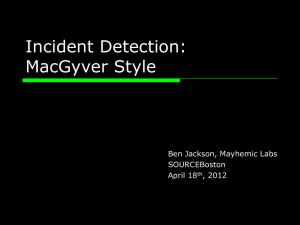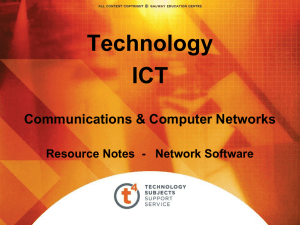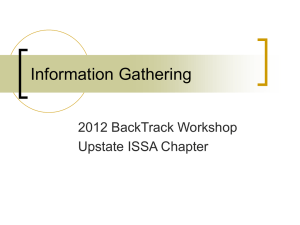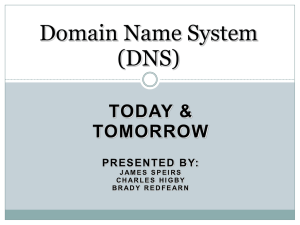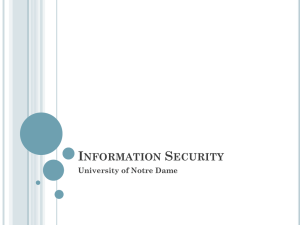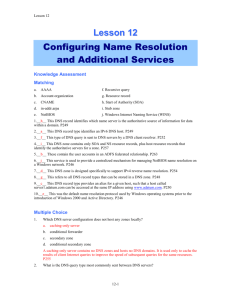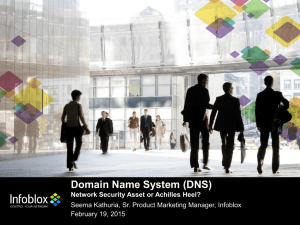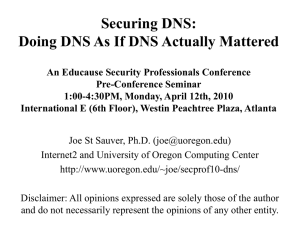SergeiKomarovSlides
advertisement
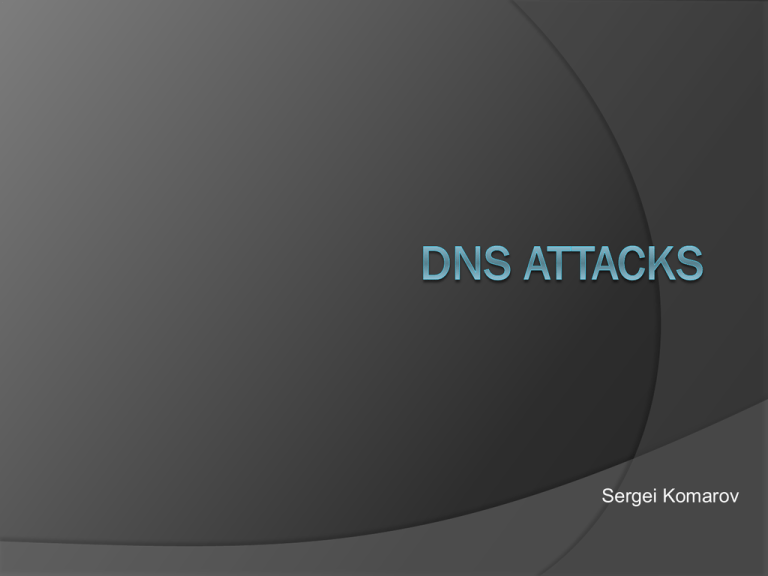
Sergei Komarov DNS Mechanism for IP <> hostname resolution Globally distributed database Hierarchical structure Comprised of three components A “name space” Servers making that name space available Resolvers (clients) which query the servers about the name space DNS Name servers answer ‘DNS’ questions, give authoritative answers for one or more zones. Several types of name servers Authoritative servers ○ master (primary) The master server normally loads the data from a zone file ○ slave (secondary) A slave server normally replicates the data from the master via a zone transfer (Caching) recursive servers ○ also caching forwarders DNS zones & domains Zone - sub-tree of a larger tree identified by a domain name, contains resource records and sub-domains DNS Records ‘A’ record Defines a host, contains IPv4 address ‘AAAA’ record Defines a host, contains IPv6 address ‘MX’ record Defines mail servers for particular domain ‘NS’ record authoritative nameservers for domain ‘CNAME’ Record Alias DNS Security Vulnerabilities Packet Sniffing DNS queries/responses come unsigned and unencrypted as one packet Transaction ID guessing A 16-bit field identifying a specific DNS transaction. The transaction ID is created by the message originator. Using the transaction ID, the DNS client can match responses to its requests. Caching problems No fast & secure way of propagating updates and invalidations DNS Security Vulnerabilities Information Leakage Zone transfer not configured correctly Result: anyone can query the nameserver DNS Dynamic Update Vulnerabilities e.g. DHCP uses DNS Dynamic Updates to add/delete RRs on demand Authenication takes place on the primary server of the zone, based on the IP address, which could be spoofed BIND Security Old versions still in use extensively DNS Security Attacks MITM(Man in the Middle Attacks) The attacker makes connections with the victims and relays messages between them, making them believe that they are talking directly to each other over a private connection In DNS only IP address, ports and Query ID of source can be verified, but this is easy to spoof. DNS Security Attacks Cache Poisoning using Name Chaining Victim issues a query Atacker injects DNS names into the response of RR’s and can reroute subsequent DNS queries to another server This is achieved by means of DNS RRs(resource records) whose RDATA portion includes a DNS name which can be used as a hook to let an attacker feed bad data into a victim’s cache. The most affected types of RRs are CNAME, NS, and DNAME(alias for the whole DNS domain) RRs. DNS Security Attacks Cache Poisoning using Transaction ID Prediction Transaction ID field is only a 16-bit field There are only 232 possible combinations of ID and client UDP ports Some transaction ID generators are flawed, can be predicted Solution? DNSSEC Adds new records: ○ Origin authentication ○ Transaction authentication ○ Request authentication Each secured zone has a key pair Public key, stored as a resource record (type KEY) in the secured zone. The public key is used by DNS servers and Resolvers to verify the zone’s digital signature. A private key is used to sign a RRset. If data is modified during transport the signature is no longer valid. Nothing is encrypted, only signatures are used. Easy to implement if hardware support present Has been around for years DNS Attacks Questions?


